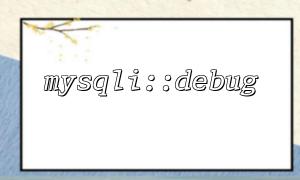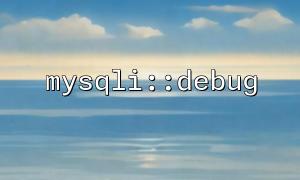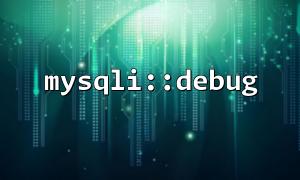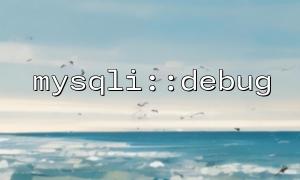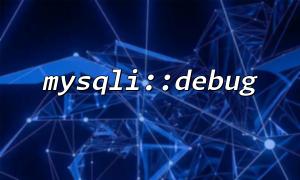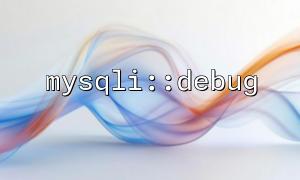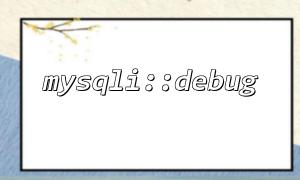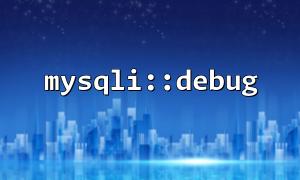When debugging databases using PHP’s mysqli extension, the mysqli::debug function can write debug information to a specified log file, making it easier for developers to troubleshoot issues. However, many developers face problems where the log file cannot be written when using mysqli::debug. This article will analyze the reasons for this issue in detail and provide effective solutions for permission problems.
mysqli::debug is a debugging tool provided by the mysqli extension that writes MySQL debug information to a log file. The typical usage is:
mysqli::debug("d:t:o:/path/to/logfile.log");
The parameter format d:t:o:
When running mysqli::debug("d:t:o:/var/log/mysqli_debug.log"); but the log file is not written, the main cause is usually permission issues, including:
Insufficient file permissions: The user running the PHP process (such as www-data, apache, etc.) lacks write permissions to the log file or its directory.
Directory does not exist or lacks permissions: The specified log file directory does not exist, or directory permissions prevent file creation and writing.
SELinux or security module restrictions: On systems with security modules enabled (such as SELinux, AppArmor), PHP’s access to the specified directory may be restricted.
Incorrect path: The log file path is incorrect or misspelled, causing the log file location to be unreachable.
Here we use a Linux server as an example to explain solutions:
Assuming the log file path is /var/log/mysqli_debug.log:
ls -l /var/log/mysqli_debug.log
ls -ld /var/log/
Confirm the /var/log/mysqli_debug.log file exists and is writable, or confirm the /var/log/ directory allows file creation.
The PHP process usually runs under users like www-data, apache, or nginx. You can check by running ps aux | grep php.
If the log file doesn’t exist, create it manually first:
sudo touch /var/log/mysqli_debug.log
sudo chown www-data:www-data /var/log/mysqli_debug.log
sudo chmod 664 /var/log/mysqli_debug.log
To allow PHP to create log files within the directory:
sudo chown www-data:www-data /var/log/
sudo chmod 775 /var/log/
Note: Be cautious when changing permissions to avoid security risks.
The /var/log/ directory is a system directory with strict permissions. It is recommended to place the log file in a directory where the web server has write permissions, such as a logs folder inside your project directory:
mysqli::debug("d:t:o:/var/www/html/project/logs/mysqli_debug.log");
Make sure the directory and log file have the correct permissions.
Below is a simplified example demonstrating how to enable mysqli::debug and specify a log path:
<?php
// Enable mysqli debugging, write logs to the project’s logs directory
mysqli::debug("d:t:o:/var/www/html/project/logs/m66.net_mysqli_debug.log");
<p>// Connect to the database<br>
$mysqli = new mysqli("m66.net", "user", "password", "database");</p>
<p>if ($mysqli->connect_error) {<br>
die("Connection failed: " . $mysqli->connect_error);<br>
}</p>
<p>echo "Connection successful";</p>
<p>// Close connection<br>
$mysqli->close();<br>
?><br>
Make sure the /var/www/html/project/logs/ directory exists and PHP has write permissions.
mysqli::debug failing to write logs is most commonly caused by insufficient permissions.
Confirm that the log file and directory exist and are writable by the PHP process user.
Place log files in non-system sensitive directories for easier permission management.
If security modules like SELinux are enabled on the server, additional configuration is needed to allow write permissions.
By properly configuring permissions, developers can effectively use mysqli::debug to record debug information, enabling more efficient troubleshooting and resolution of database-related issues.
Related Tags:
mysqli